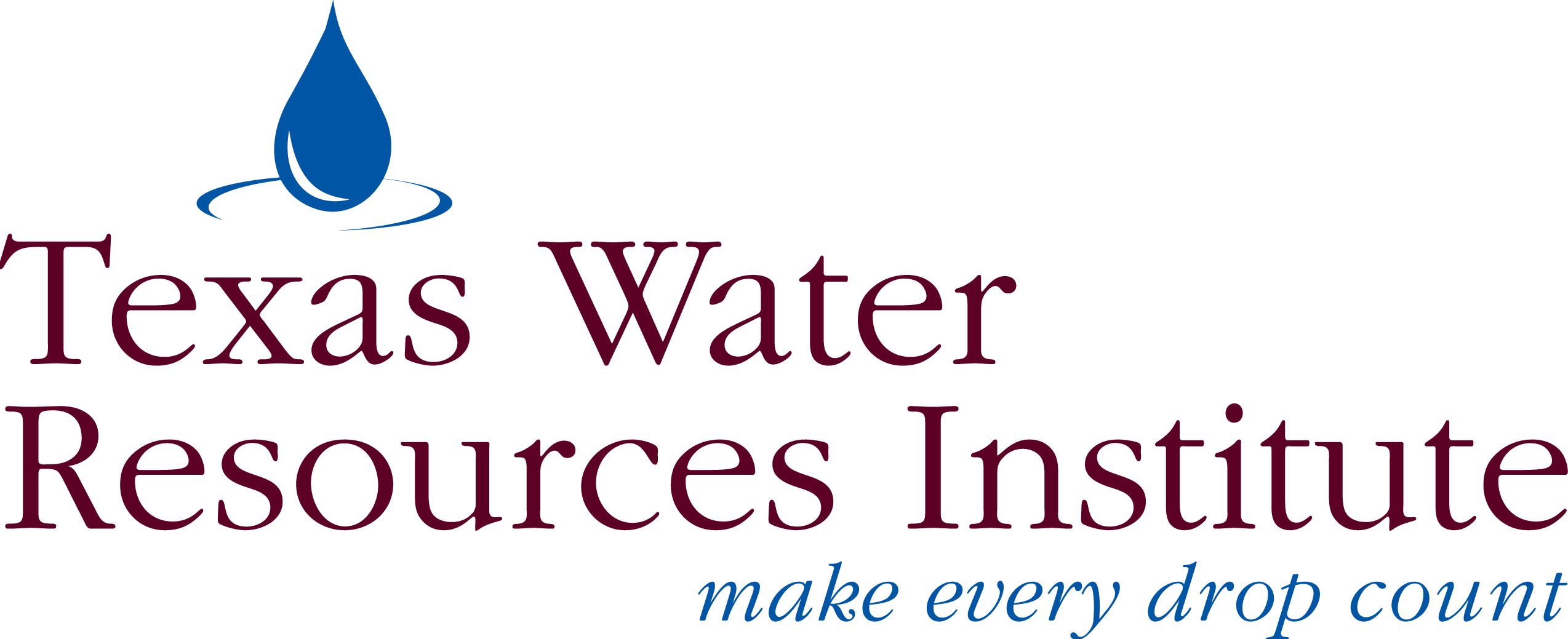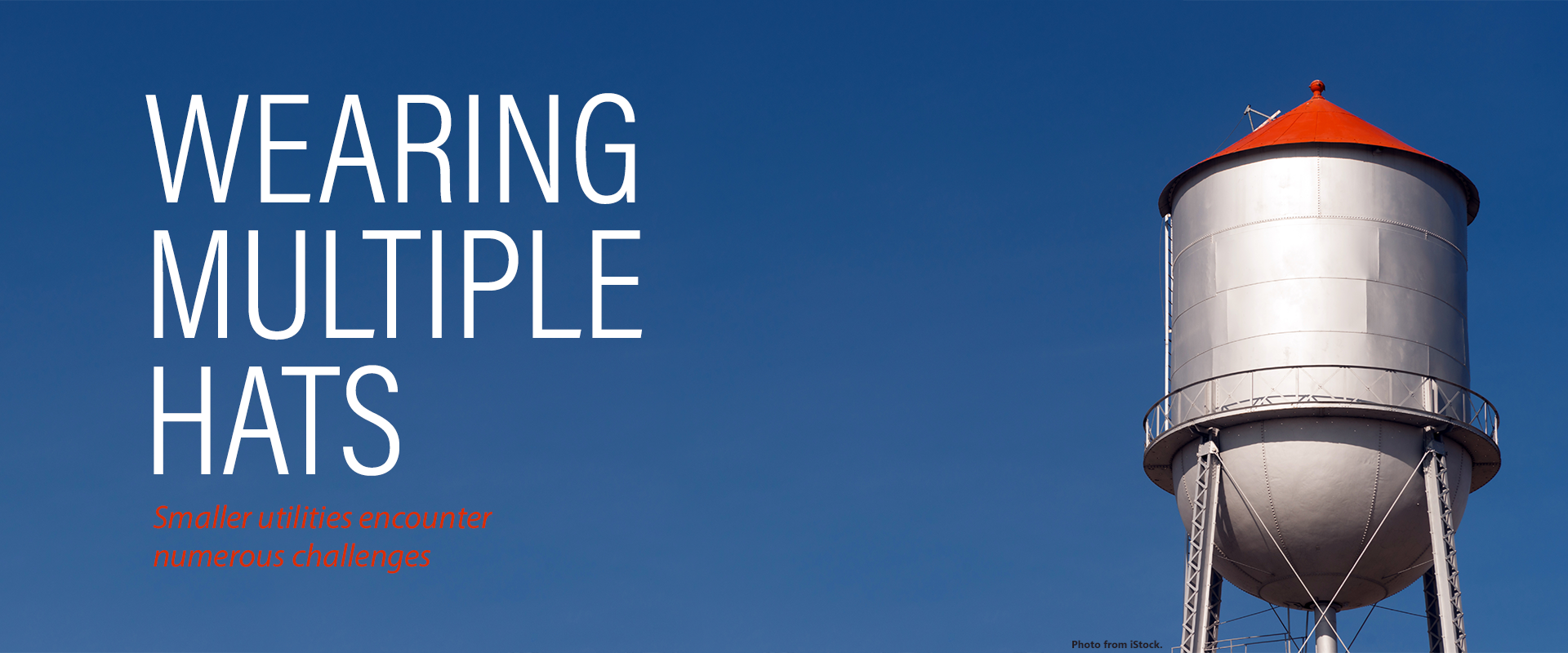Almost 6,000 Texas public water utility systems serve populations of 3,000 or smaller. Supplying around 3.2 million people with water, they encounter unique, important challenges that their larger counterparts don’t necessarily face.
Many of these challenges come down to economies of scale. Smaller utilities struggle with having enough revenue to fund infrastructure upgrades and other capital improvements and hiring or keeping adequate qualified staff, experts said.
Dr. Manny Teodoro, associate professor in Texas A&M’s Department of Political Science, said a utility that serves a million people and has a staff of thousands is very different from a utility that serves 5,000 people and has a staff of a dozen. And those utilities are different from utilities that serve fewer than 1,000 customers and have a part-time staff.
“All utilities face these challenges, but the smaller the utility, the bigger the problem, the bigger the challenge,” he said.
Smaller water utilities struggle with having enough revenue to fund infrastructure upgrades and other capital improvements and hiring or keeping adequate qualified staff.
More information
- Dr. Robert Greer, Scholars@TAMU
- Dr. Manuel Teodoro, Scholars@TAMU
- Measuring household affordability for water and sewer utilities, American Water Works Association Journal
- Drink what you can pay for: Financing infrastructure in a fragmented water system, Urban Studies
Want to get txH20 delivered right to your inbox? Click to subscribe.
Dorothy Young, program specialist with the Texas Commission of Environmental Quality (TCEQ), agreed.
“With smaller water systems, it’s a matter of running it like a business, having the funds and the planning and keeping on a path of compliance,” Young said. “They don’t have the same budget. They don’t have the same resources as larger systems or access to workforces or funding.
“And, a lot of times, the mayor may run a store and is also the operator. They wear lots of different hats and are pulled in different directions.”
Young said not having the needed revenue for operations is a challenge for many smaller communities.
“They see their neighbors, and the neighbors might not seem very well off,” she said. “They don’t want to burden their neighbors with higher water rates, but in the end they probably need to review and maybe raise rates more often.”
Recruiting workers
Most smaller utilities have more difficulty recruiting and keeping the highly trained, specialized operators needed in the water industry today. (See “Water, but No Workers.”)
“Large utilities can hire specialized operators depending on the kind of plant they have,” Young said. “They can have more backup; they’ve got more revenue coming in; and so it’s just easier to do.”
Teodoro agreed that larger utilities have an advantage over smaller ones when recruiting staff. He said there are some places in Texas, particularly in South and West Texas, where utilities can’t find qualified water and sewer operators at any price.
“It’s not that local government can’t raise the money; it’s that those people don’t exist,” he said.

ALL UTILITIES FACE THESE CHALLENGES, BUT THE SMALLER THE UTILITY, THE BIGGER THE PROBLEM, THE BIGGER THE CHALLENGE.
Dr. Manny Teodoro
Many water utilities have transitioned from a low-tech industry to one that is technology-driven and require their workers to be trained in the newest technologies.
“The level of regulatory demand and the new kind of challenges to water quality from different kinds of contaminants makes everything much more complicated,” Teodoro said.
Young said TCEQ’s staff encourages small water systems to look to their own community for possible workers.
“Particularly where there is the lure of the oil field with higher paying jobs in nearby towns that might pay a lot more, we try to encourage home-grown operators,” Young said. “When you’ve got people who want to stay in the town, we suggest talking to them about getting trained.”
Consolidating small systems
Dr. Robert Greer, assistant professor in Texas A&M University’s Bush School of Government and Public Service, said Texas has a very fragmented system of water utilities, ranging from city-owned utilities to more than 1,000 special districts, such as municipal utility districts and irrigation districts. Smaller districts’ ability to generate revenue to fund their operations is limited, with some able to raise revenue with property taxes, but most relying on revenue generated from water and wastewater services.
“If you were to draw the perfect sort of efficient system to deliver water, it wouldn’t include so many different districts that have different interests and different financial and political capacities,” Greer said.
With smaller water systems, it’s a matter of running it like a business, having the funds and the planning and keeping on a path of compliance. They don’t have the same budget. They don’t have the same resources as larger systems or access to workforces or funding. And, a lot of times, the mayor may run a store and is also the operator. They wear lots of different hats and are pulled in different directions.Dorothy Young
Both Teodoro and Greer said that coordination between surrounding entities or consolidation of smaller utilities is one way to address both financial and workforce issues, but both bring their own challenges.
“When you have a limited geographic area or limited consumer base that is the sole source of your revenue, you don’t have the ability or the financial capacity sometimes to take on these really large multimillion dollar projects, such as replacing all the pipes or installing new treatment facilities,” Greer said. “Because we have sort of neglected infrastructure for so long, we end up with districts where even if they recognize the need to invest in new infrastructure, they don’t have the capacity to do so. They don’t have the revenue streams that they need to then issue the debt or take on these large projects.”
The choices for the smaller utilities, Greer believes, are for them to coordinate with surrounding districts with a collaborative agreement or for the state to provide state dollars.
Teodoro also thinks the consolidation and regionalization of small systems may help. He said consolidation could be done by combining two or more adjacent utilities.
“But sometimes that’s not possible or not practical,” Teodoro said. “And in that case, it’s still preferable to have small systems unified under a single organization because you can provide the organizational economies of scale.”
Greer said he has also looked at how those special districts operate organizationally. Often, he said, the smaller utilities or districts are networking and sharing contractors for specific, needed tasks, such as engineering, legal work or financial advice.
Consolidation would be complicated, Teodoro said, not only because of governmental issues but also because of the tremendous amount of emotions and identity that are part of local water systems.
“A lot of folks think of their water system the same way they think about their local football team or their basketball team,” Teodoro said. “Asking a community to take their name off the local water tower is like asking Paris to give up the Eiffel Tower.”
Because we have sort of neglected infrastructure for so long, we end up with districts where even if they recognize the need to invest in new infrastructure, they don’t have the capacity to do so. They don’t have the revenue streams that they need to then issue the debt or take on these large projects.Dr. Robert Greer
Up-to-date infrastructure aids water quality
In both their research, Greer and Teodoro have found that the fiscal capacity of districts to raise revenue affects their ability not only to invest in infrastructure but also to solve environmental or health-related water quality issues.
Greer examined some of the more than 500 special districts in the Houston area responsible for delivering drinking water to determine some of the institutional capacity-type issues that arise with heavily fragmented systems.
Because smaller districts in lower income areas have pressure to keep water rates low and they don’t have the means to invest in infrastructure, Greer said they receive multiple fines for not meeting standards for clean drinking water.
“Rich districts are able to invest more in infrastructure and, therefore, have fewer EPA violations; poorer districts are not able to invest and, therefore, have higher frequencies of EPA health violations,” Greer said of the expected results of his study.
“There are different areas of Houston where that’s a challenge,” Greer said. “We want to be able to highlight that this is an issue going on right in our own backyard and something that we need to be aware of.”
Teodoro and Dr. David Switzer, a former Texas A&M doctoral student now at the University of Missouri, conducted a national study that discovered compliance to EPA’s Safe Drinking Water Act (SDWA) is also tied to human capital.
“When a utility has the size and resources to take advantage of human capital resources in its labor pool, compliance with the more technically difficult aspects of SDWA regulations improves,” Teodoro said.

A LOT OF FOLKS THINK OF THEIR WATER SYSTEM THE SAME WAY THEY THINK ABOUT THEIR LOCAL FOOTBALL TEAM OR THEIR BASKETBALL TEAM. ASKING A COMMUNITY TO TAKE THEIR NAME OFF THE LOCAL WATER TOWER IS LIKE ASKING PARIS TO GIVE UP THE EIFFEL TOWER.
Dr. Manny Teodoro
Resources for smaller utilities
There are resources available to help smaller water utilities with their different challenges.
The Texas Water Infrastructure Coordination Committee (TWICC) was formed about eight years ago to provide funding and other assistance to water and wastewater systems. Young said TWICC is an umbrella organization of different entities — funding, regulatory and nonprofits — that organized voluntarily to help entities with their water and wastewater projects.
In her position with TCEQ, Young is involved in the Capacity Development Program, which supports water systems through technical assessments and managerial and financial assistance.
The agency offers free on-site financial, managerial and technical (FMT) assistance to help public water and wastewater systems comply with regulations and address issues such as water loss and planning. Free technical training workshops are also available to public water systems. TCEQ contracts with experienced water and wastewater professionals to help provide this assistance and training. FMT assistance can also help systems determine whether consolidation with a neighbor or larger utility is feasible.
“TCEQ has been providing free on-site assistance for a long time, and the program keeps growing,” Young said.
TCEQ also has the Texas Optimization Program for Surface Water Treatment Plants. Originally created with the intent for TCEQ staff to help existing water systems optimize their operations, Joel Klumpp, manager of TCEQ’s plans and technical review section, said the program has expanded to also offer advanced technical assistance, including problem-solving.
“Now the Texas Optimization Program is deployed not just to achieve optimization but also to provide technical assistance to a water system that perhaps doesn’t have the technical resources of its own or the ability to hire someone to help with some technical issues,” he said.
The Texas Water Development Board (TWDB) is piloting a one-year asset management program specifically to help smaller utilities.
Jessica Zuba, TWDB’s deputy executive administrator for water supply and infrastructure, said TWDB is steering six small utilities through the process of asset management. The agency paired each utility with a consulting engineer to examine its system to determine needs and help the utility prepare a plan for going forward.
“We have some entities in the state that don’t know where existing facilities are because they weren’t mapped or there’s just been so much turnover that no one’s familiar with where lines are,” she said.
Depending on the success of the pilot program, Zuba said it could become a permanent part of TWDB’s programs.



